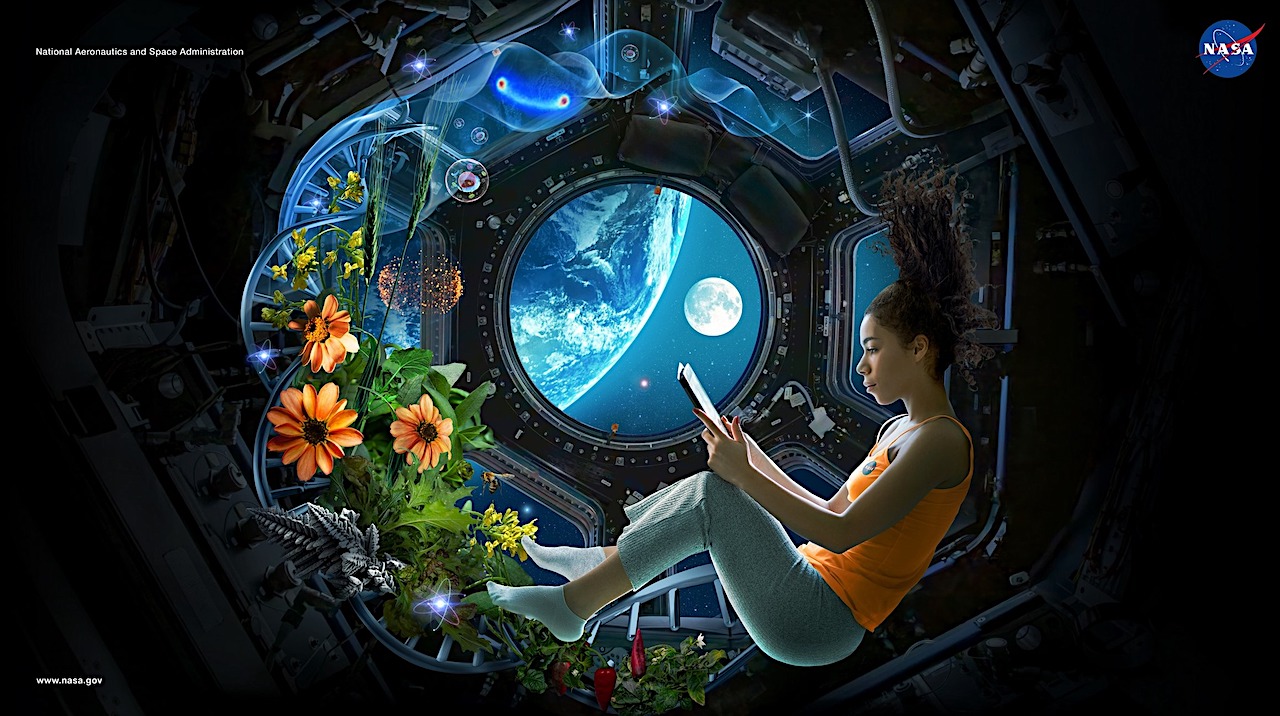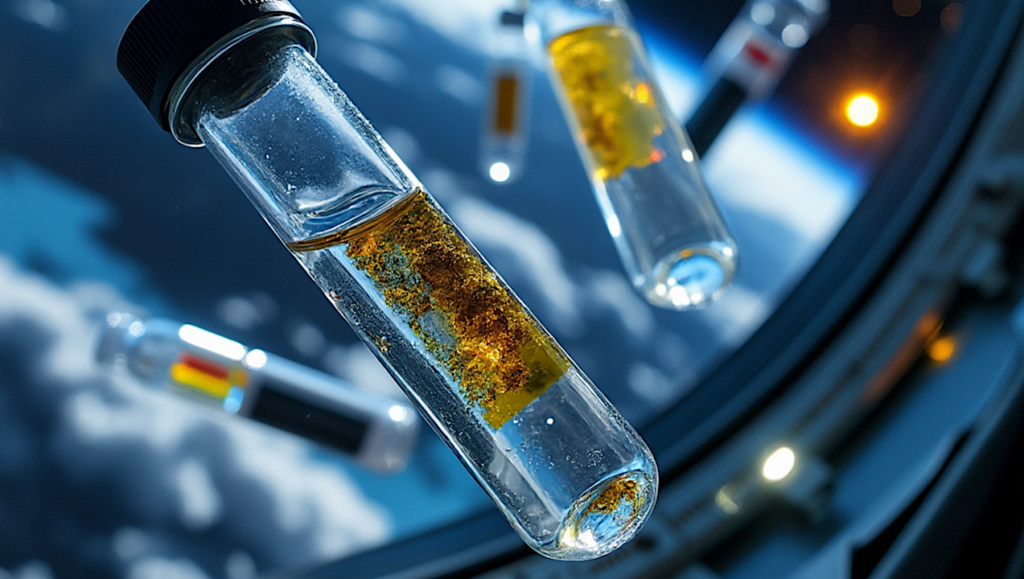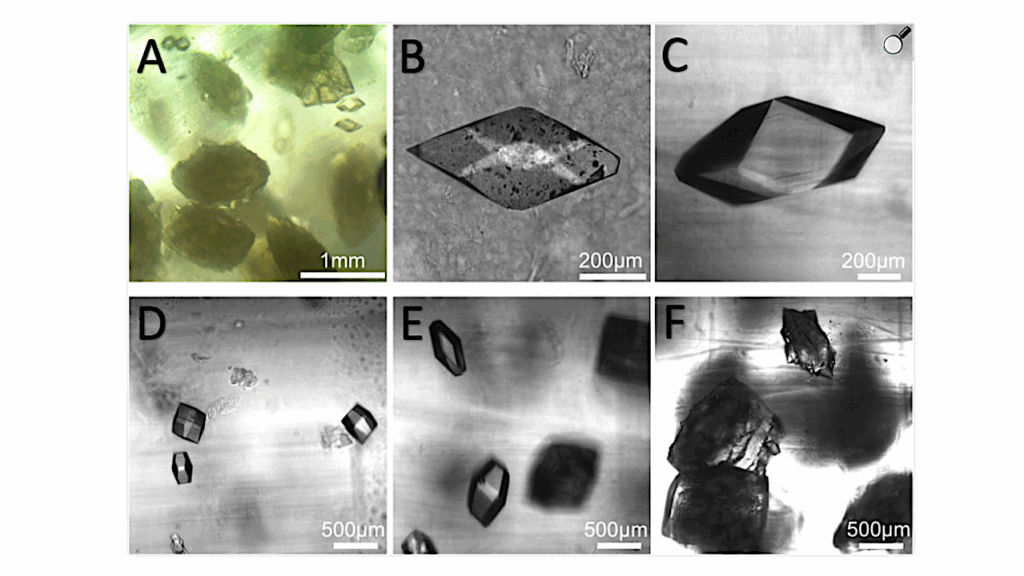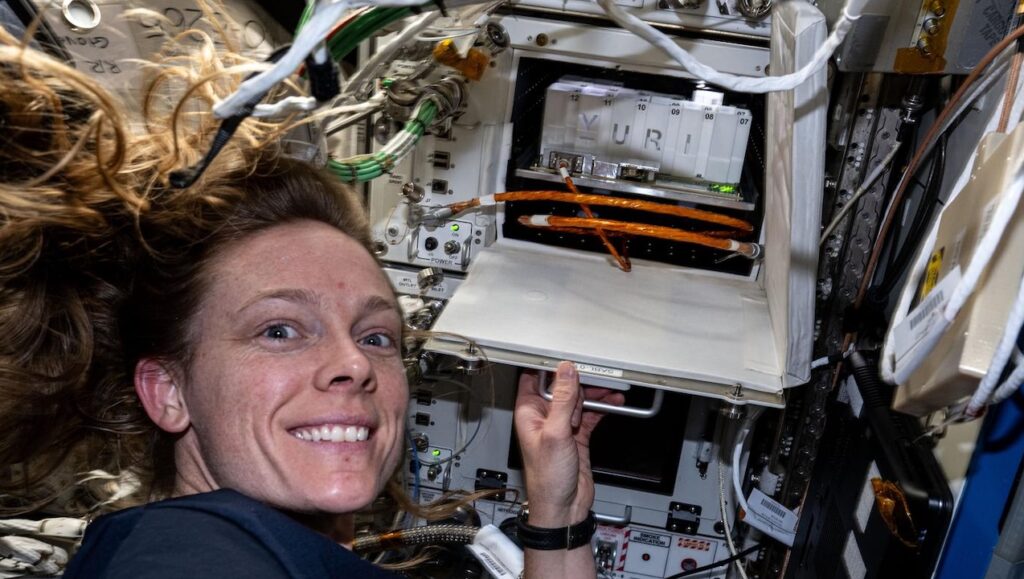NASA Spaceline Current Awareness List #1,102 31 May 2024 (Space Life Science Research Results)

Space Biology — NASA
The abstract in PubMed or at the publisher’s site is linked when available and will open in a new window.
Papers deriving from NASA support:
- Yang J, Barrila J, Nauman EA, Nydam SD, Yang S, Park J, Gutierrez-Jensen AD, Castro CL, Ott CM, Buss K, Steel J, Zakrajsek AD, Schuff MM, Nickerson CA.Incremental increases in physiological fluid shear progressively alter pathogenic phenotypes and gene expression in multidrug resistant Salmonella.Gut Microbes. 2024 May 24;16(1):2357767. Online ahead of print.Note: From the abstract: “The ability of bacteria to sense and respond to mechanical forces has important implications for pathogens during infection, as they experience wide fluid shear fluctuations in the host. However, little is known about how mechanical forces encountered in the infected host drive microbial pathogenesis. Herein, we combined mathematical modeling with hydrodynamic bacterial culture to profile transcriptomic and pathogenesis-related phenotypes of multidrug resistant S. Typhimurium (ST313 D23580) under different fluid shear conditions relevant to its transition from the intestinal tract to the bloodstream.” This article may be obtained online without charge.
Journal Impact Factor: 12.2
Funding: C.M. Ott is affiliated with NASA Johnson Space Center. - Ludtka C, Allen JB.The effects of simulated and real microgravity on vascular smooth muscle cells.Gravitational and Space Research. 2024 May 25;12(1):46-59.Note: From the introduction: “This review evaluates the literature covering vascular smooth muscle cells in microgravity over the last several decades, with a focus on recent developments.” This article may be obtained online without charge.
Journal Impact Factor: 0.4
Funding: “This work was supported by an award (T32 DK108736) from the National Institute of Diabetes and Digestive and Kidney Diseases administered by the University of Florida as well as an award from the National Aeronautics and Space Administration through the Florida Space Grant Consortium.” - Nastasi N, Haines SR, Bope A, Meyer ME, Horack JM, Dannemiller KC.Fungal diversity differences in the indoor dust microbiome from built environments on Earth and in space.Sci Rep. 2024 May 24;14:11858.PI: K.C. DannemillerNote: From the article: “This study aims to understand the differences between the indoor microbiomes of Earth-based residential buildings and dust collected from the International Space Station (ISS). Specifically, ISS dust and residential carpet with dust previously collected from homes in Ohio were incubated under varying relative humidity conditions using the time-of-wetness framework. Fungal and bacterial DNA was extracted from these incubated samples, sequenced with Illumina MiSeq, and analyzed with a bioinformatics pipeline to determine taxonomy.” This article may be obtained online without charge.
Journal Impact Factor: 4.6
Funding: “We would like to thank the National Aeronautics and Space Administration (NASA) Space Biology Grant (#80NSSC19K0429) for funding and support for this study. We also greatly appreciate Mark Ott as well as the staff at the NASA Microbiology Laboratory and Toxicology and Environmental Chemistry (TEC) group for their help in obtaining dust samples from the International Space Station.” - Hoenemann JN, Moestl S, de Boni L, Hoffmann F, Arz M, Berger L, Pesta D, Heusser K, Mulder E, Lee SMC, Macias BR, Tank J, Jordan J.Cardiopulmonary deconditioning and plasma volume loss are not sufficient to provoke orthostatic hypertension.Hypertens Res. 2024 May 23.Note: This article is a brief communication and may be obtained online without charge.
Journal Impact Factor: 5.4
Funding: S.M.C. Lee and B.R. Macias are affiliated with NASA Johnson Space Center. - McCauley ME, McCauley P, Kalachev LV, Riedy SM, Banks S, Ecker AJ, Dinges DF, Van Dongen HPA.Biomathematical modeling of fatigue due to sleep inertia.J Theor Biol. 2024 May 21;111851.PI: D.F. DingesNote: This article may be obtained online without charge.
Journal Impact Factor: 2
Funding: “The datasets used for calibration and validation were drawn from studies supported by National Institutes of Health grant NR04281, Air Force Office of Scientific Research grant F49620-95-1-0388, and a National Space Biomedical Research Institute grant through NASA NCC 9-58.” - Xie Z, Zhang T, Kim S, Lu J, Zhang W, Lin C-H, Wu M-R, Davis A, Channa R, Giancardo L, Chen H, Wang S, Chen R, Zhi D.iGWAS: Image-based genome-wide association of self-supervised deep phenotyping of retina fundus images.PLoS Genet. 2024 May 10;20(5):e1011273.PI: L. GiancardoNote: This article may be obtained online without charge.
Journal Impact Factor: Not available for this journal
Funding: “…This work was supported in part by an Unrestricted Grant from Research to Prevent Blindness to the UW-Madison Department of Ophthalmology and Visual Sciences. L.G. was also supported by the Translational Research Institute through NASA Cooperative Agreement NNX16AO69A, NIH grants UL1TR003167 and R01NS121154, and a Cancer Prevention and Research Institute of Texas grant (RP 170668). …”
Other papers of interest:
- Pirjanian NA, Kalpana K, Kruglikov I, Mesci P, Stoudemire J, Grisanti P, Noggle SA, Loring JF, Fossati V.Establishing neural organoid cultures for investigating the effects of microgravity in low-Earth orbit (LEO).Methods Mol Biol. 2024 May 28.Note: From the abstract: “Recent findings from studies involving astronauts and animal models indicate that microgravity increases immune cell activity and potentially alters the white and gray matter of the central nervous system (CNS). To further investigate the impact of microgravity on CNS cells, we established cultures of three-dimensional neural organoids containing isogenic microglia, the brain’s resident immune cells, and sent them onboard the International Space Station.”
- Zhao Y, Ji G, Zhou S, Cai S, Li K, Zhang W, Zhang C, Yan N, Zhang S, Li X, Song B, Qu L.IGF2BP2-Shox2 axis regulates hippocampal-neuronal senescence to alleviate microgravity-induced recognition disturbance.iScience. 2024 Jun 21;27(6):109917.Note: Hindlimb unloading study. This article may be obtained online without charge.
- Elmoselhi AB, Shankhwar V, Qaisar R, Hamoudi R, Brix B, Salon A, Goswami N.Retinal vascular changes and arterial stiffness during 8-month isolation and confinement: The SIRIUS-21 space analog mission.Front Physiol. 2024 May 26;15:1374309.Note: This article is part of Research Topic “Space Physiology and Medicine: Reports and Unique Data Obtained on Small Sample Sizes” (https://www.frontiersin.org/research-topics/58257/space-physiology-and-medicine-reports-and-unique-data-obtained-on-small-sample-sizes#overview). The Research Topic also includes articles from previous Current Awareness Lists #1,077 https://doi.org/10.3389/fphys.2023.1303938 and https://doi.org/10.3389/fphys.2023.1285802; and #1,096 https://doi.org/10.3389/fphys.2024.1369788. This article may be obtained online without charge.
- Faerman A, Buchanan DM, Williams NR.Transcranial magnetic stimulation as a countermeasure for behavioral and neuropsychological risks of long-duration and deep-space missions.npj Microgravity. 2024 May 28;10:58.Note: This article may be obtained online without charge.
- Katakam P, Bhavaraju MLR, Narayana TV, Bhandari K, Sriram N, Sisinty VS, Adiki SK.Navigating the challenges of 3D printing personalized medicine in space explorations: A comprehensive review.Crit Rev Ther Drug Carrier Syst. 2024 Mar 30;41(6):89-110. Review.Note: From the abstract: “Space exploration has undergone a paradigm shift in recent years, with a growing emphasis on long-duration missions and human habitation on other celestial bodies. Private aerospace businesses are at the forefront of advancing the next iteration of spacecraft, encompassing a wide range of applications such as deep space exploration (e.g., SpaceX) and cost-effective satellite deployments (e.g., Rocketlab). One of the critical challenges associated with prolonged space missions is the provision of personalized medical care. 3D printing technology has emerged as a potential solution, enabling the on-demand production of personalized medical devices and medications.” This article may be obtained online without charge.
- Formanek A, Townsend J, Ottensmeyer MP, Kamine TH.A novel 3D-printed gravity-independent air-eliminating filter for rapid intravenous infusions.Aerosp Med Hum Perform. 2024 Jun;95(6):327-32.
- Frett T, Lecheler L, Arz M, Pustowalow W, Petrat G, Mommsen F, Breuer J, Schmitz MT, Green DA, Jordan J.Acute cardiovascular and muscular response to rowing ergometer exercise in artificial gravity – A pilot trial.npj Microgravity. 2024 May 23;10(1):57.Note: From the abstract: “Prolonged immobilization and spaceflight cause cardiovascular and musculoskeletal deconditioning. Combining artificial gravity through short-arm centrifugation with rowing exercise may serve as a countermeasure. We aimed to compare the tolerability, muscle force production, cardiovascular response, and power output of rowing on a short-arm centrifuge and under terrestrial gravity. Twelve rowing athletes (4 women, aged 27.2 ± 7.4 years, height 179 ± 0.1 cm, mass 73.7 ± 9.4 kg) participated in two rowing sessions, spaced at least six weeks apart.” This article may be obtained online without charge.
- Carswell L, Sridharan DM, Chien LC, Hirose W, Giroux V, Nakagawa H, Pluth JM.Modeling radiation-induced epithelial cell injury in murine three-dimensional esophageal organoids.Biomolecules. 2024 Apr 25;14(5):519.Note: This article is part of Special Issue “Esophageal Diseases: Molecular Basis and Therapeutic Approaches” (https://www.mdpi.com/journal/biomolecules/special_issues/096D3L1NU1) and may be obtained online without charge.
- Wang B, Fang M, Song D, Cheng J, Wu K.Rapid assessment of cosmic radiation exposure in aviation based on BP neural network method.Radiat Prot Dosimetry. 2024 May 24.
- Poore CP, Yang J, Wei S, Fhu CK, Bichler Z, Wang J, Soong TW, Liao P.Enhanced isradipine sensitivity in vascular smooth muscle cells due to hypoxia-induced Cav1.2 splicing and RbFox1/Fox2 downregulation.Febs j. 2024 May 24. Online ahead of print.
- Mamuti M, Chao L, Tian Z.Analysis of mechanical characteristics and permeability of TPMS and Voronoi porous structure for bone scaffold.Comput Methods Biomech Biomed Engin. 2024 May 29;1-14. Online ahead of print.
- Cohen JN, Hedge ET, Greaves DK, Robertson AD, Nahas H, Yu ACH, Petersen LG, Au JS.Characterization of internal jugular vein region-specific distension and flow patterns during progressive volume shifting.J Appl Physiol (1985). 2024 May 30. Online ahead of print.Note: Head-down tilt study.
- Masís Solano M, Richer E, Costantino S, Lesk MR.Optic nerve head pulsatile displacement in open-angle glaucoma after intraocular pressure reduction measured by optical coherence tomography: A pilot study.Bioengineering (Basel). 2024 Apr 23;11(5):411.Note: This article is part of Special Issue “Biomechanics Studies in Ophthalmology” (https://www.mdpi.com/journal/bioengineering/special_issues/HA642SQ41J) and may be obtained online without charge.
- Altinbas M, Ozpinar A, Akbaba M, Nacaroglu SA, Sargolzaeimoghaddam M, Sargolzaeimoghaddam M.Orbital solitary fibrous tumor in a commercial airline pilot.Aerosp Med Hum Perform. 2024 Jun;95(6):333-6.
- Crutcher R, Kolasinski N.Functional dyspepsia and tricyclic antidepressant use in a Naval Flight Officer.Aerosp Med Hum Perform. 2024 Jun;95(6):337-40.
- Semenov YS, Melnikov IS, Luzhnov PV, Dyachenko AI.Oscillations of hemodynamic parameters induced by negative pressure breathing in healthy humans.Aerosp Med Hum Perform. 2024 Jun;95(6):297-304.Note: From the abstract: “Negative pressure breathing is breathing with decreased pressure in the respiratory tract without lowering pressure acting on the torso. We lowered air pressure only during inspiration (NPBin). NPBin, used to increase venous return to the heart, is considered a countermeasure against redistribution of body fluids toward the head during spaceflight. We studied NPBin effects on circulation in healthy humans with an emphasis on NPBin-induced oscillations of hemodynamic parameters synchronous with breathing. We propose an approach to analyze the oscillations based on coherent averaging.”
- Wingelaar-Jagt YQ, Wingelaar TT, Riedel WJ, Ramaekers JG.Modafinil subjectively does not impair sleep in aviators after a period of extended wakefulness.Aerosp Med Hum Perform. 2024 Jun;95(6):290-6.
Astrobiology, space biology, microgravity,








